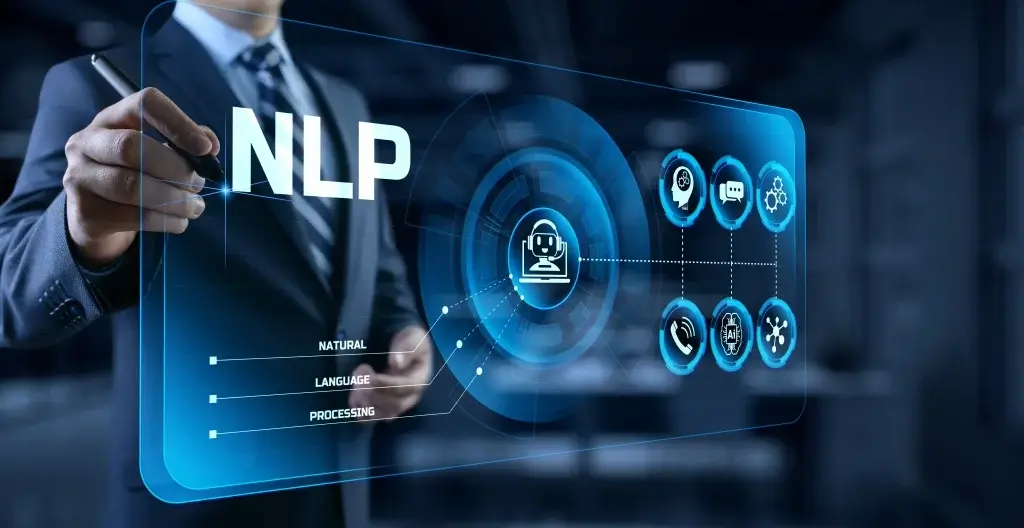Understanding Semantic Analysis NLP
Additionally, it delves into the contextual understanding and relationships between linguistic elements, enabling a deeper comprehension of textual content. Semantic analysis refers to a process of understanding natural language (text) by extracting insightful information such as context, emotions, and sentiments from unstructured data. It gives computers and systems the ability to understand, interpret, and derive meanings what is semantic analysis from sentences, paragraphs, reports, registers, files, or any document of a similar kind. By analyzing the meaning of requests, semantic analysis helps you to know your customers better. In fact, it pinpoints the reasons for your customers’ satisfaction or dissatisfaction, in addition to review their emotions. This understanding of sentiment then complements the traditional analyses you use to process customer feedback.

In this example, the add_numbers function expects two numbers as arguments, but we’ve passed a string “5” and an integer 10. This code will run without syntax errors, but it will produce unexpected results due to the semantic error of passing incompatible types to the function. Tutorials Point is a leading Ed Tech company striving to provide the best learning material on technical and non-technical subjects. A beginning of semantic analysis coupled with automatic transcription, here during a Proof of Concept with Spoke. But to extract the “substantial marrow”, it is still necessary to know how to analyze this dataset. Semantic analysis applied to consumer studies can highlight insights that could turn out to be harbingers of a profound change in a market.
How does semantic analysis help in ensuring code correctness?
As an entrepreneur, he’s a huge fan of liberated company principles, where teammates give the best through creativity without constraints. A science-fiction lover, he remains the only human being believing that Andy Weir’s ‘The Martian’ is a how-to guide for entrepreneurs. Homonymy and polysemy deal with the closeness or relatedness of the senses between words.

Instead, they use sentiment analysis algorithms to automate this process and provide real-time feedback. Sentiment analysis uses machine learning models to perform text analysis of human language. The metrics used are designed to detect whether the overall sentiment of a piece of text is positive, negative or neutral.
Techniques of Semantic Analysis
”, sentiment analysis can categorize the former as negative feedback about the battery and the latter as positive feedback about the camera. Machine Learning has not only enhanced the accuracy of semantic analysis but has also paved the way for scalable, real-time analysis of vast textual datasets. As the field of ML continues to evolve, it’s anticipated that machine learning tools and its integration with semantic analysis will yield even more refined and accurate insights into human language.
For Example, Tagging Twitter mentions by sentiment to get a sense of how customers feel about your product and can identify unhappy customers in real-time. We can any of the below two semantic analysis techniques depending on the type of information you would like to obtain from the given data. In this task, we try to detect the semantic relationships present in a text. Usually, relationships involve two or more entities such as names of people, places, company names, etc.
Why Optimizing AI Algorithms is Key in Product Development
It may be defined as the words having same spelling or same form but having different and unrelated meaning. For example, the word “Bat” is a homonymy word because bat can be an implement to hit a ball or bat is a nocturnal flying mammal also. Semantic analysis makes it possible to bring out the uses, values and motivations of the target. Have you ever bought a product that you only use at 25% of its capacity? And it’s a safe bet that, despite all its options, you’ve found one you’re missing. Still, you might have wished for a device or safe with a larger capacity.
This is particularly important for tasks such as sentiment analysis, which involves the classification of text data into positive, negative, or neutral categories. Without semantic analysis, computers would not be able to distinguish between different meanings of the same word or interpret sarcasm and irony, leading to inaccurate results. Sentiment analysis, also referred to as opinion mining, is an approach to natural language processing (NLP) that identifies the emotional tone behind a body of text.
Interpretation is easy for a human but not so simple for artificial intelligence algorithms. Apple can refer to a number of possibilities including the fruit, multiple companies (Apple Inc, Apple Records), their products, along with some other interesting meanings . However, many organizations struggle to capitalize on it because of their inability to analyze unstructured data.
This challenge is a frequent roadblock for artificial intelligence (AI) initiatives that tackle language-intensive processes. Moreover, QuestionPro typically provides visualization tools and reporting features to present survey data, including textual responses. These visualizations help identify trends or patterns within the unstructured text data, supporting the interpretation of semantic aspects to some extent. Chatbots, virtual assistants, and recommendation systems benefit from semantic analysis by providing more accurate and context-aware responses, thus significantly improving user satisfaction. Semantic analysis methods will provide companies the ability to understand the meaning of the text and achieve comprehension and communication levels that are at par with humans. The idea of entity extraction is to identify named entities in text, such as names of people, companies, places, etc.
It goes beyond syntactic analysis, which focuses solely on grammar and structure. Semantic analysis aims to uncover the deeper meaning and intent behind the words used in communication. In the realm of customer support, automated ticketing systems leverage semantic analysis to classify and prioritize customer complaints or inquiries. As a result, tickets can be automatically categorized, prioritized, and sometimes even provided to customer service teams with potential solutions without human intervention. Conversational chatbots have come a long way from rule-based systems to intelligent agents that can engage users in almost human-like conversations. The application of semantic analysis in chatbots allows them to understand the intent and context behind user queries, ensuring more accurate and relevant responses.
Gensim is a library for topic modelling and document similarity analysis. It is beneficial for techniques like Word2Vec, Doc2Vec, and Latent Semantic Analysis (LSA), which are integral to semantic analysis. The journey of NLP and semantic analysis is far from over, and we can expect an exciting future marked by innovation and breakthroughs.
- Driven by the analysis, tools emerge as pivotal assets in crafting customer-centric strategies and automating processes.
- Semantic analysis can begin with the relationship between individual words.
- With the ongoing commitment to address challenges and embrace future trends, the journey of semantic analysis remains exciting and full of potential.
- In this article, we will explore how semantics and data science intersect, and how semantic analysis can be used to extract meaningful insights from complex datasets.
Semantic analysis plays an essential role in producing error-free and efficient code. Lexical semantics plays an important role in semantic analysis, allowing machines to understand relationships between lexical items like words, phrasal verbs, etc. Semantic Analysis is a subfield of Natural Language Processing (NLP) that attempts to understand the meaning of Natural Language. Understanding Natural Language might seem a straightforward process to us as humans. However, due to the vast complexity and subjectivity involved in human language, interpreting it is quite a complicated task for machines. Semantic Analysis of Natural Language captures the meaning of the given text while taking into account context, logical structuring of sentences and grammar roles.
Linking of linguistic elements to non-linguistic elements
In Sentiment analysis, our aim is to detect the emotions as positive, negative, or neutral in a text to denote urgency. This article is part of an ongoing blog series on Natural Language Processing (NLP). I hope after reading that article you can understand the power of NLP in Artificial Intelligence. So, in this part of this series, we will start our discussion on Semantic analysis, which is a level of the NLP tasks, and see all the important terminologies or concepts in this analysis. An author might also use semantics to give an entire work a certain tone. For instance, a semantic analysis of Mark Twain’s Huckleberry Finn would reveal that the narrator, Huck, does not use the same semantic patterns that Twain would have used in everyday life.
BERT-as-a-Service is a tool that simplifies the deployment and usage of BERT models for various NLP tasks. It allows you to obtain sentence embeddings and contextual word embeddings effortlessly. Stanford CoreNLP is a suite of NLP tools that can perform tasks like part-of-speech tagging, named entity recognition, and dependency parsing. Transformers, developed by Hugging Face, is a library that provides easy access to state-of-the-art transformer-based NLP models.
Answers to polls or survey questions like “nothing” or “everything” are hard to categorize when the context is not given; they could be labeled as positive or negative depending on the question. Similarly, it’s difficult to train systems to identify irony and sarcasm, and this can lead to incorrectly labeled sentiments. Algorithms have trouble with pronoun resolution, which refers to what the antecedent to a pronoun is in a sentence. For example, in analyzing the comment “We went for a walk and then dinner. I didn’t enjoy it,” a system might not be able to identify what the writer didn’t enjoy — the walk or the dinner. Organizations typically don’t have the time or resources to scour the internet and read and analyze every piece of data relating to their products, services and brand.
What is sentiment analysis? Using NLP and ML to extract meaning – CIO
What is sentiment analysis? Using NLP and ML to extract meaning.
Posted: Thu, 09 Sep 2021 07:00:00 GMT [source]
Text summarization extracts words, phrases, and sentences to form a text summary that can be more easily consumed. The accuracy of the summary depends on a machine’s ability to understand language data. This is a key concern for NLP practitioners responsible for the ROI and accuracy of their NLP programs. You can proactively get ahead of NLP problems by improving machine language understanding.
In the second part, the individual words will be combined to provide meaning in sentences. The purpose of semantic analysis is to draw exact meaning, or you can say dictionary meaning from the text. It is precisely to collect this type of feedback that semantic analysis has been adopted by UX researchers.



